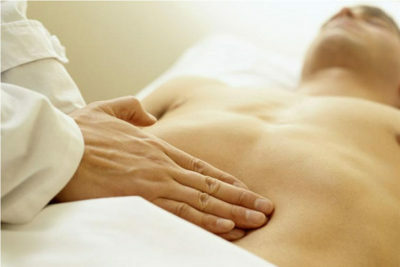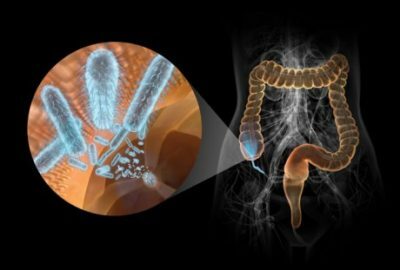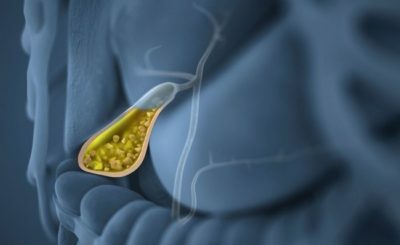1 The function of the body
The functions of this organ are diverse:
- During fetal development, it contributes to the hematopoietic function( from the moment when the child is born, this property is lost, however, in some hematological pathologies it is activated again).
- Spleen cells dissolve and absorb dead red blood cells, bacteria and other unnecessary substances that enter the bloodstream.
- Due to the fact that the body produces bodies that can fight microbes, it takes part in the well-coordinated work of the immune system.
- This body accumulates iron, which is extremely necessary for the formation of hemoglobin.
- The spleen acts as a kind of blood depot - in case of acute necessity, a certain part of it enters the bloodstream.
- Participates in the metabolism, in particular in the assimilation of iron.
- Through the destruction of red blood cells this organ is involved in the formation of bile.
Do you have gastritis?
GALINA SAVINA: "How easy is it to cure gastritis at home for 1 month. A proven method - write down a recipe. ..!"Read more & gt; & gt;
Despite the presence of these functions, the removal of the described organ does not carry serious pathological changes in the human body. The functions of this body are assumed by the immune system. Thus, it does not belong to the vital. It is interesting that even the ancient Roman doctor Galen considered this body mysterious.
2 Position and structure
The location of the organ is in the upper left part of the abdominal cavity, in the left hypochondrium, behind the stomach. Localized between 9 and 11 edges. In contact with such organs:
- diaphragm;
- stomach( posterior wall);
- pancreas;
- large intestine;
- left kidney;
- the left adrenal gland.
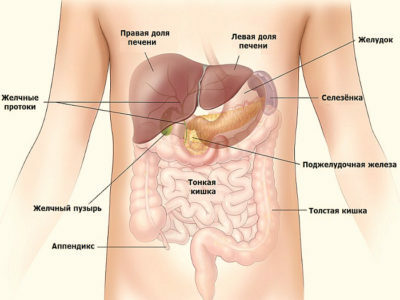
We recommend to read
- Causes of pain in the left hypochondrium at the back
- What causes the spleen in a person
- Where the pancreas is located in humans
- Effective remedy for gastritis and stomach ulcer
All sides of the body are covered with a peritoneum. In the area of its gate there is a site free from the peritoneum. Has two surfaces: convex and concave. It is attached by ligaments to the diaphragm, stomach, colon, liver. Because of the change in the position of the internal organs, the location of the organ described also changes.
The internal cavity is called pulp( or pulp).Distinguish white and red pulp of the spleen. Red pulp is responsible for the deposition of blood cells, phagocytosis. In white pulp lymphocytes and leukocytes accumulate. There are also a marginal zone - at the junction of red and white pulp.
The spleen is innervated by the branches of the vagus nerve, sympathetic fibers of the splenic plexus. It is supplied with blood from the abdominal aorta. In the region of the spleen, it splits into several branches of the arteries. The outflow of venous blood is provided by venous sinuses - the vessels emerge from them into the portal vein.
-
 IMPORTANT TO KNOW! Gastritis? Ulcer? To have a stomach ulcer not turned into cancer, drink a glass. ..Read the article & gt; & gt;
IMPORTANT TO KNOW! Gastritis? Ulcer? To have a stomach ulcer not turned into cancer, drink a glass. ..Read the article & gt; & gt;

In man, the spleen is laid in the intrauterine period, at 5-6 weeks. There are times when a person does not have this body. Sometimes in the body there may be two or even more spleen. In a newborn, it weighs about 9 g, and by 1 year of age its weight increases to 28 g. At 17 years, its weight is about 170 g.
3 Causes of
Disease Almost all diseases of the spleen are characterized by pain of varying degrees of intensity. The most frequent and common causes of pain in this body are the following:
- Parasitic infection. It often happens that in the human body there are eggs of helminths and other parasites. They find themselves areas for reproduction, and the spleen is no exception. And since some parasites can have strong enough jaws, then they pinch off parts of the organ tissue. Because of this, pain appears and the general condition of a person worsens.
- Tumors of varying degrees of malignancy. Signs of the development of these processes do not appear immediately, which, of course, worsens the conditions for diagnosing such diseases and their treatment.
- Closed or open injury.
- Irregular blood supply to the body.
- Cysts.
-
 Gastroenterologist. IMPORTANT: "I beg you, if you began to worry about abdominal pain, heartburn, nausea, do not in any way do gases. .."Read more & gt; & gt;
Gastroenterologist. IMPORTANT: "I beg you, if you began to worry about abdominal pain, heartburn, nausea, do not in any way do gases. .."Read more & gt; & gt;
Body diseases are many. It is necessary to pay attention to such symptoms:
- organ increase;
- pain of varying intensity - from moderate to severe;
- hyperthermia, that is, a rise in temperature;
- fatigue;
- lowering of immunity.
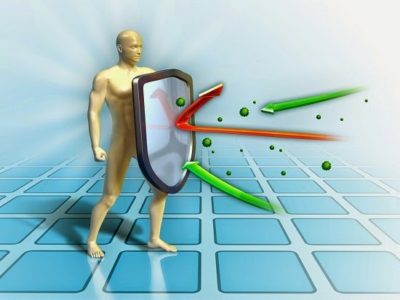
4 Increase in size
Some people may have an enlarged spleen. Most often this is due to the accumulation of toxins in the body. The spleen can increase due to prolonged antibiotic treatment. Because of the stagnation of blood, this organ can also increase in size.
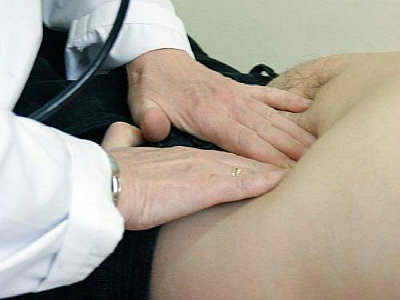
There are characteristic symptoms that indicate that the spleen is enlarged:
- Decreased hemoglobin of the blood. This can only be known when testing. Since most people ignore the delivery of tests, such a clear sign of distress is most often ignored.
- Infectious diseases. Frequent infections indicate that a person's immunity is reduced.
- Ulceration of feet, arms. Often ulcers can appear in the oral cavity.
- Increased heart rate.
- Appearance of bruises on the body, provided that the physical effect on the tissue is minimal.
- Recurrent bleeding.
- Increased body temperature.
- Pain on the left side with irradiation in the back or upper limb.
- Sensation of stomach overflow.
TIP FROM THE MAIN GASTROENTEROLOGIST
Korotov SV: "I can recommend only one remedy for the rapid treatment of Ulcer and Gastritis, which is now recommended by the Ministry of Health. .." Read testimonials & gt; & gt;
5 What is an infarction of the body?
This is a very dangerous disease, which may not show bright symptoms. Often, a heart attack happens abruptly, but it is often accompanied by dangerous pathologies of other organs. In such cases, the spleen experiences an increased load with which it can not cope. Symptoms of an infarction are as follows:
- very sharp pains in the left subcostal area, because of what the patient can not move;
- fever;
- nausea;
- chest pain radiating to the shoulder;
- difficulty breathing: during the inhalation the patient feels a sharp pain;
- tension of the muscles of the peritoneum.

The asymptomatic course of the spleen infarction suggests that the lesions are not so large.
6 Abscess and inflammation of
Abscess is characterized by very vivid symptoms. With their appearance, you need to consult a doctor without delay: the patient requires emergency medical help. The signs of this disease include:
- severe pain in the hypochondrium on the left, which can not be tolerated;
- high temperature, sometimes reaching dangerous levels, fever;
- enlarged spleen;
- lack of appetite;
- very severe nausea;
- dizziness.

If you have a sharp pain on the left side, you should immediately call an ambulance: the lesion should be treated as soon as possible.
Inflammation of the body can be an independent disease, but most often it is associated with other pathological phenomena in the body. Symptoms of inflammation are as follows:
- very sharp pains of diffuse nature in the abdomen: the patient can not determine their localization;
- vomiting;
- slight increase in body temperature;
- increase in the size of the spleen;
- fever occurring in the event of development of a purulent abscess;
- more frequent pulse.
7 Cyst and injuries
Cysts often appear in the spleen. Most often they develop in women due to changes in the hormonal background. The main symptom of cyst formation in this organ is pain. Symptoms of the cystic process are:
- frequent diarrhea or constipation;
- severity in the left side of the hypochondrium;
- nausea, worse after eating;
- is allergic to those foods that it has not already had;
- enlargement of the spleen( this symptom is well detected during palpation of the abdominal cavity).

Trauma can be of a different nature. In some cases, damage to other organs - liver, stomach, kidneys, left lung. Symptomatic trauma depends on its nature and damage to neighboring organs. With open damage, the following symptoms appear to the fore:
- pallor of the skin and mucous membranes;
- increased skin contractions;
- drop in blood pressure;
- lowering of hemoglobin level;
- decrease in circulating blood volume;
- with transthoracic injury, there are signs of hemothorax( accumulation of blood in the pleural cavity);
- when the blood accumulates in the space below the diaphragm, the patient prefers to be on his left side, his knees crouching under him;
- draws attention to the abrupt tension of the peritoneum;
- in the case of damage to hollow organs, a clinical picture of diffuse peritonitis is observed.
With blunt abdominal trauma, falls, etc., closed spleen lesions occur. The occurrence of such injuries depends on how much blood has been poured into the stomach, as well as from a combination of other injuries.
Any organ damage requires immediate surgery. Often a splenectomy may be required.
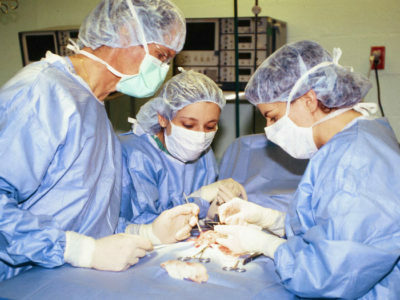
8 What is splenectomy?
The removal of the spleen is done only in exceptional cases, when the disease threatens human life. The operation is performed with the help of laparoscopy. Its stages are as follows:
- a laparoscope is inserted into the human abdomen;
- in the left side of the abdominal cavity a small incision is made through which a camera with a flashlight is inserted;
- cuts are made to prevent bleeding;
- cuts are made to remove the spleen;
- the remote organ is placed in a special sealed bag and removed.

In case the spleen is very enlarged or there is an excessively developed fat layer in the abdominal cavity, a cavitary operation is performed. Any kind of such operation is carried out only with the use of general anesthesia.
According to doctors, human life after removal of this organ has such features:
- The immune system is somewhat weakened. This is due to the fact that the spleen takes part in the ripening of red blood cells.
- A person with a distant spleen is more likely to have an infectious pathology, and they have a longer and heavier course. There is an increased risk of developing pneumonia, meningitis, hepatitis.
- Possible formation of a hernia at the site of the incision.
- Disruption of the pancreas, which is manifested by nausea, vomiting, a feeling of heaviness in the hypochondrium to the left.
- Sometimes an inflammation of the gallbladder can occur, since part of the lost functions are taken over by the liver.
After the operation to remove the spleen, you need to adjust the nutrition. In the diet should include more fresh vegetables, fruits, herbs. It is necessary to refuse fried, smoked, salted. A person with a distended spleen is very harmed by alcohol and smoking.

9 Medical measures
If you suspect a trauma, you must apply cold to the injured place. It is strictly forbidden to give any painkillers to the patient. It can erase clinical manifestations, and the doctor can put the wrong diagnosis. A wrong treatment, in turn, is life-threatening. In order to determine the injury in time, everyone should have an idea of where the spleen is located in man.

With an infarction of this body, pain medications are prescribed. However, their reception is prohibited.
There are also folk ways of treating this organ. So, a mixture of honey and ginger helps with an enlarged spleen. The composition is applied to the skin of the left hypochondrium. The course of treatment is not less than 50 days. For internal reception prepare infusions:
- herb sheepskin bags;
- hop cones;
- mixture of tri-color violet, nettle leaves, strawberry leaves;
- mixture in equal parts of chamomile flowers, celandine grass, St. John's wort, fennel, Angelica roots.
The use of folk remedies is only permissible after a doctor's prior consultation. Self-medication by any means without diagnosis is unacceptable - it can worsen a person's condition.
In any case, if a person feels pain in the spleen, he needs to undergo a complete examination. Ignoring the pain in the left hypochondrium is unacceptable.
Only timely detection of the disease guarantees effective treatment and recovery.
- 1 Body function
- 2 Position and structure
- 3 Causes of disease occurrence
- 4 Increase in size
- 5 What is an infarction of the body?
- 6 Abscess and inflammation
- 7 Kist and trauma
- 8 What is splenectomy?
- 9 Treatment measures
Many people do not know where the spleen is. Sometimes they do not even suspect that abdominal pain and other unpleasant sensations are manifestations of the diseases of this organ. Ignore them is very dangerous for the health and life of the patient. Consider where the spleen is located in a person, what are its functions, diseases and how to treat them.

